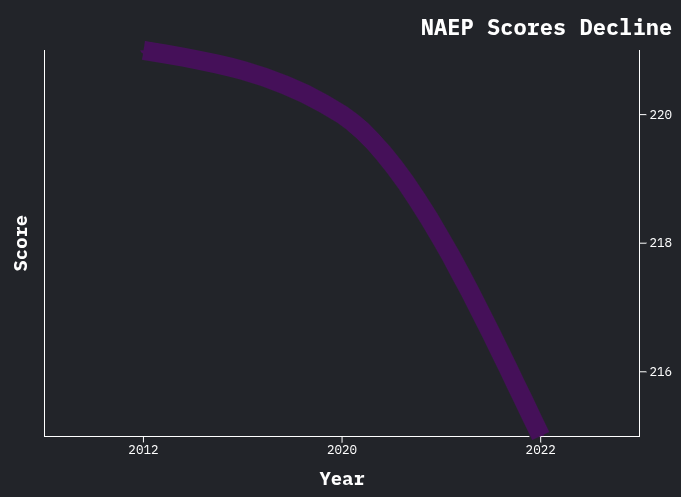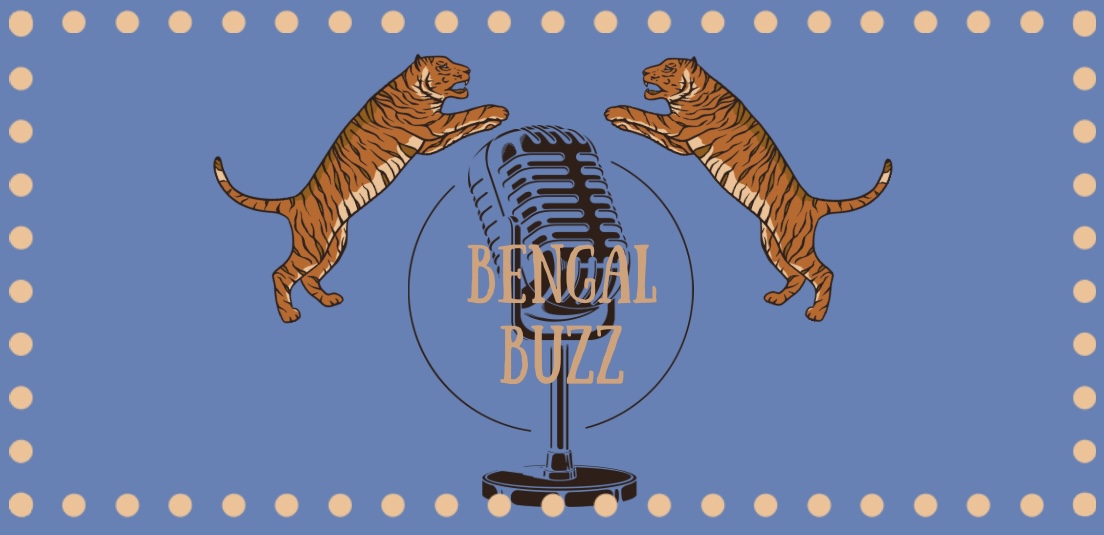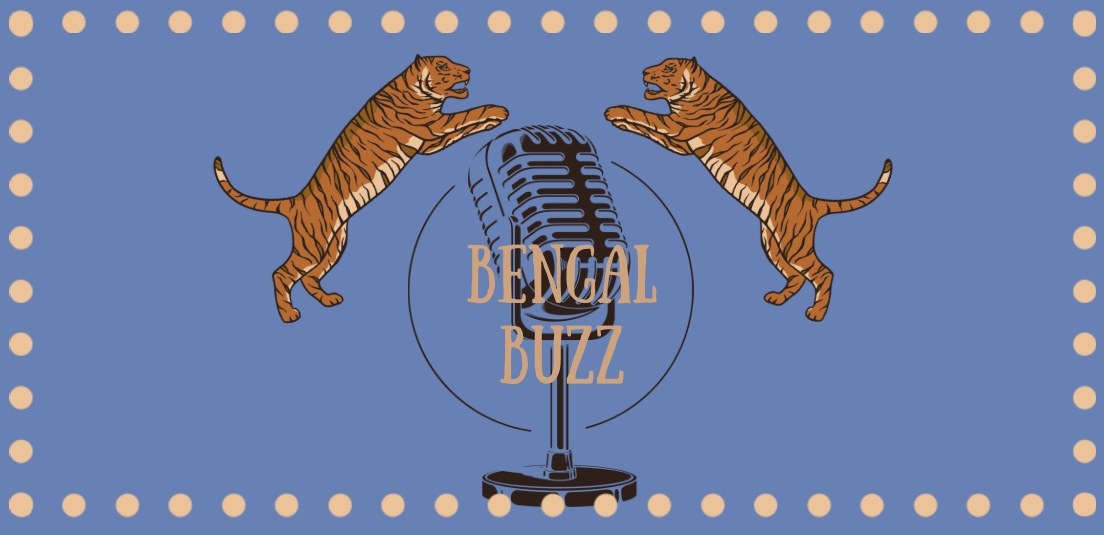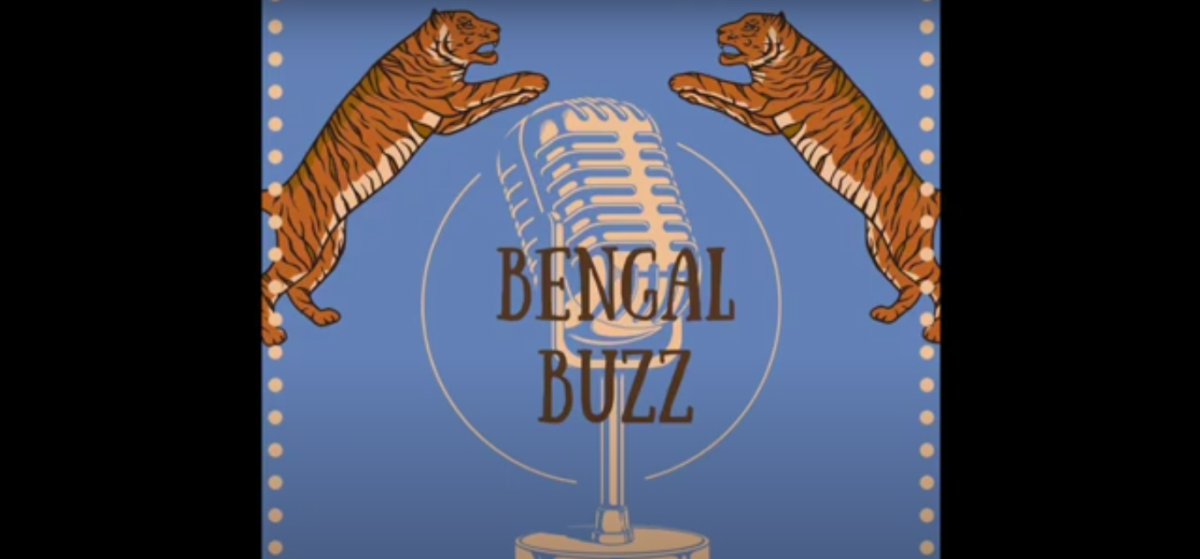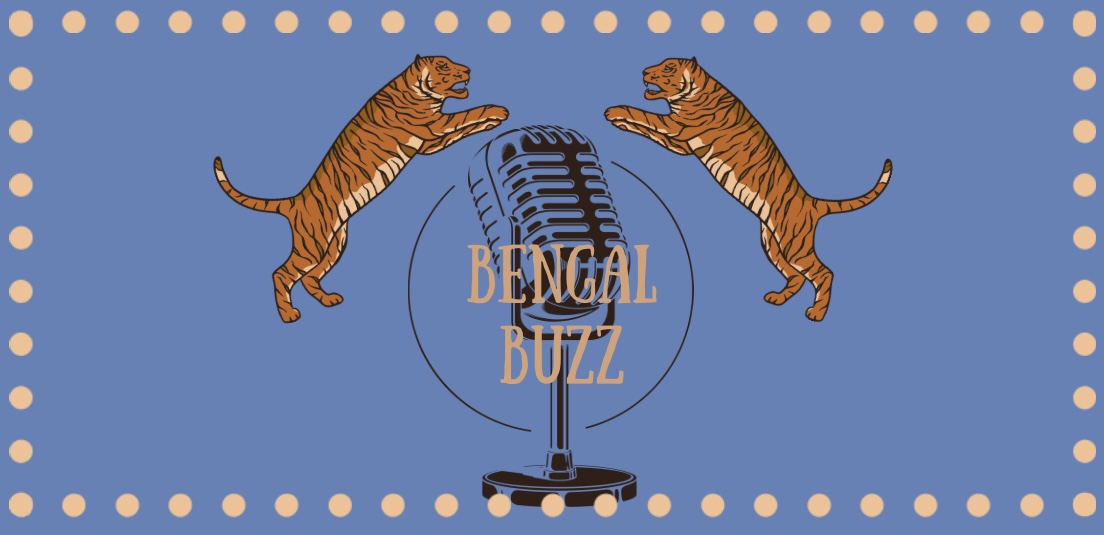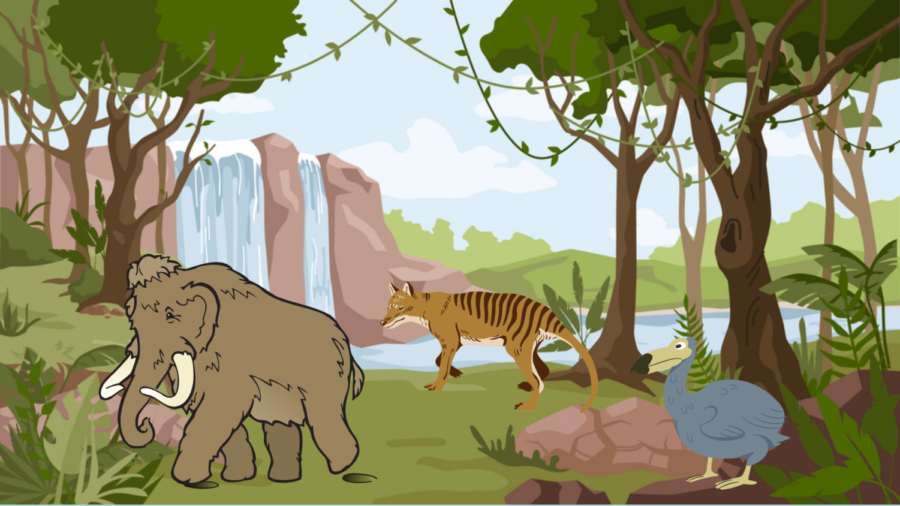Possibility of new life for extinct animals
Graphic design of a Woolly Mammoth, Dodo Bird, and Tasmanian Tiger in a forest
As science continues to advance, and the bounds of what we are capable of are stretched, the very control of life becomes within reach.
This is exactly what scientists around the globe have been trying to grasp by bringing back species such as Woolly Mammoths, Dodo birds, and Tasmanian Tigers.
De-extinction has been able to grow past the point of just conceptualization with the development of gene editing technology known as CRISPR. CRISPR, which has been around for quite some time, essentially works by taking a piece of sample DNA, then cutting it to let it regrow. At some point enzymes are produced by CRISPR and attached to the DNA, effectively creating the desired cell.
One mountain goat-like animal, a Pyrenean Ibex, became the first to be brought back from extinction in 2003, just three years after going extinct. Due to imperfections in the cloning process, the newborn died from lung issues within minutes.
Unfortunately, or fortunately for some, the fact that a somewhat complete DNA sample is required means that you shouldn’t be expecting to see anything like dinosaurs anytime soon. Any DNA has mostly, if not completely, degraded.
With the prospect of controlling life in such a way, ethical concerns have naturally been raised.
On one side, those in favor of de-extinction mainly argue for the return of species driven to extinction by humans, which includes all of the aforementioned animals as a way to make amends for our actions.
Possible benefits for the world ecosystem have also been brought forward. For example, it has been proposed that the reintroduction of mammoths could help to reduce greenhouse gasses. The introduction of mammoths could work to facilitate plant growth in the now-frozen landscape.
On the opposing side, there exists a few arguments. One argument is that, when brought back, the world and habitats will be much different than that when these animals were naturally alive; the best example of this is the Woolly Mammoth.
Those opposed have also raised concerns over how the reintroduction of extinct animals could negatively affect currently balanced, thriving ecosystems.
Another argument puts forth the fact that species will be brought back as endangered species, therefore requiring conservation, which takes a lot of resources.
Stemming off the last point, there’s concern about how de-extinction will affect the attitudes of people towards endangered species in the future if it becomes believed that their extinction is a trivial, reversible matter.
As science continues to be unwavering in its advance, the exciting idea of seeing certain animals that seem fantastical to us arises. First, though, people must weigh the potential, both positive and negative, of these animals being brought back, and if we have the right to do so.
Your donation will support the student journalists of Fuquay-Varina High School. Your contribution will allow us to purchase equipment and cover our annual website hosting costs.









